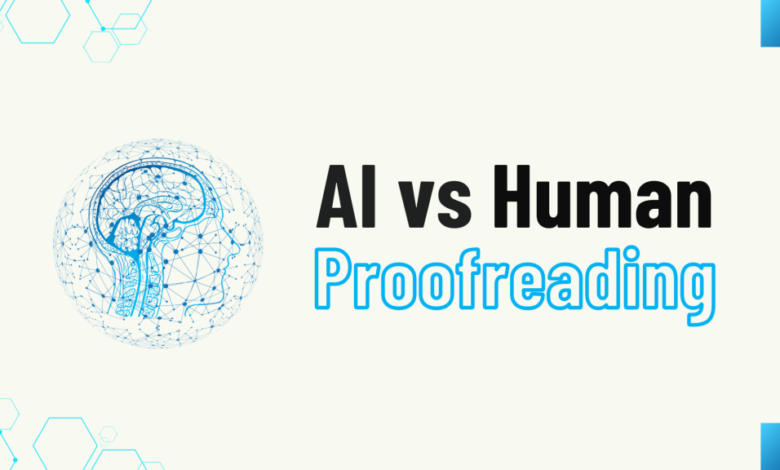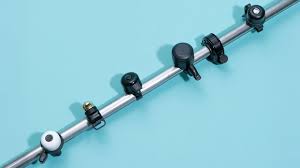AI vs Human Proofreading: Pros, Cons, and the Best Choice for Writers

In today’s digital age, writers have more resources than ever to refine their work. One of the biggest debates is whether to rely on AI vs human proofreading. Both options have their strengths, but they also come with limitations that every writer should understand. Proofreading is that final polish—the step that ensures ideas come across clearly without being overshadowed by grammar slips, typos, or awkward phrasing. But when it comes to choosing between artificial intelligence and human expertise, which one should you trust?
The Rise of AI Proofreading
Over the last few years, artificial intelligence has reshaped the way writers approach editing. Tools like Grammarly, ProWritingAid, and ChatGPT are popular because they provide instant corrections and suggestions. With a quick scan, they can highlight grammar mistakes, misspellings, or overly complex sentences. For busy writers, students, or professionals, this kind of support feels like magic.
AI proofreading shines in speed and accessibility. It doesn’t need sleep, doesn’t charge per page, and can process thousands of words in seconds. Many of these tools even explain the rules behind their corrections, so writers learn as they go. For non-native English speakers, AI often feels like having a 24/7 language coach in their pocket.
The Human Touch in Proofreading
Despite the efficiency of AI, nothing quite matches the depth of human proofreading. A seasoned proofreader isn’t just looking for misplaced commas. They understand context, tone, rhythm, and audience expectations in ways that AI cannot.
For instance, AI might flag a sentence as “too long” without realizing that its cadence adds to the storytelling. A human proofreader, however, can recognize when breaking a rule works better than following it. Humans bring judgment, nuance, and creativity to the editing process—qualities that algorithms simply don’t have.
Human proofreaders also preserve the writer’s unique voice. Where AI might suggest overly standardized phrasing, a person can ensure the corrections stay true to the style and personality of the writing. This is especially valuable in creative works, marketing content, or any piece where tone matters just as much as accuracy.
The Strengths of AI Proofreading
When considering AI vs human proofreading, it’s important to recognize what AI does best.
- Speed: AI can analyze large documents almost instantly, making it ideal for deadlines.
- Cost-effectiveness: Most AI tools are free or inexpensive compared to professional proofreading services.
- Consistency: Unlike humans, AI doesn’t get tired or overlook repeated mistakes. If you misuse an apostrophe twenty times, it will flag all twenty.
- Learning support: Many tools explain their corrections, which helps writers improve their grammar and style over time.
The Strengths of Human Proofreading
On the other hand, human proofreading brings strengths AI cannot match.
- Contextual understanding: Humans catch nuances like idioms, humor, cultural references, or double meanings.
- Tone sensitivity: A human proofreader makes sure edits fit the intended mood and audience.
- Adaptability: Language evolves quickly. Humans pick up on slang, trends, or stylistic shifts long before AI updates catch up.
- Big-picture improvements: Beyond typos, human proofreaders often suggest ways to improve flow, clarity, and impact.
When AI Works Best
AI proofreading is an excellent choice when you need quick, basic corrections. Writers often use it for:
- Emails and workplace communication that need to be polished before sending.
- Blog posts or online articles where speed is a priority.
- Academic drafts where students want grammar checked before submission.
- Non-native English writing, where AI helps boost confidence and accuracy.
AI works well as a safety net—it catches surface-level errors and ensures that your writing looks neat before a final review.
When Human Proofreading Matters Most
There are times when only a human will do. Writers often turn to human proofreaders for:
- Books, novels, and manuscripts where readers expect polished, engaging prose.
- Marketing materials where tone and persuasion can make or break a campaign.
- Creative writing where voice, rhythm, and style matter more than rigid grammar.
- Professional or legal documents where misinterpretations could have serious consequences.
In these cases, humans bring sensitivity and creativity that AI simply cannot replicate.
The Limitations of AI Proofreading
For all its advantages, AI proofreading isn’t flawless. Some common drawbacks include:
- False positives: It may flag correct sentences as errors, leaving the writer second-guessing.
- Over-simplification: AI often suggests changes that strip away personality or weaken the voice.
- Context struggles: Words with multiple meanings or culturally specific phrases often confuse it.
- Privacy risks: Some AI tools store data, which raises confidentiality concerns for sensitive documents.
The Limitations of Human Proofreading
Humans, of course, are not perfect either. Some challenges include:
- Cost: Hiring a skilled proofreader can be expensive, especially for longer works.
- Time: A thorough review takes hours or days, depending on the length of the document.
- Human error: Even the best proofreaders can miss small mistakes due to fatigue or distraction.
This means relying solely on humans can sometimes be slow or impractical for certain projects.
Finding Balance Between AI and Humans
The smartest approach may not be choosing one over the other, but using both strategically. Many professional writers now use a hybrid method:
- Run the first draft through AI to catch basic errors like typos, punctuation, or grammar issues.
- Have a human proofreader review the final draft to refine tone, context, and flow.
This combination saves time, reduces costs, and ensures the final piece has both technical accuracy and human warmth.
What Writers Should Keep in Mind
If you’re a writer navigating the debate of AI vs human proofreading, here are a few things to remember:
- Define your goals. If you only need basic corrections quickly, AI might be enough. If nuance and style matter, lean on human input.
- Be critical of AI. Don’t blindly accept every suggestion. AI is a tool, not a replacement for judgment.
- Value the human factor. Proofreaders bring cultural awareness, emotion, and creativity that AI cannot.
- Consider a hybrid approach. Start with AI for efficiency, then rely on human review for polish.
Conclusion
In the ongoing discussion about AI vs human proofreading, there’s no clear winner. Both have strengths, both have weaknesses, and both serve different purposes.
AI is fast, affordable, and reliable for catching surface-level mistakes. Human proofreaders bring depth, nuance, and creativity that elevate writing beyond correctness. Together, they form a powerful partnership.
Great writing isn’t just about being error-free—it’s about connecting with your audience. AI can help tidy up the mechanics, but humans ensure your words resonate. The key for writers is not to choose one side, but to understand when to use each. Think of AI as your assistant and humans as your mentor. Together, they ensure your writing isn’t just correct—it’s unforgettable.


